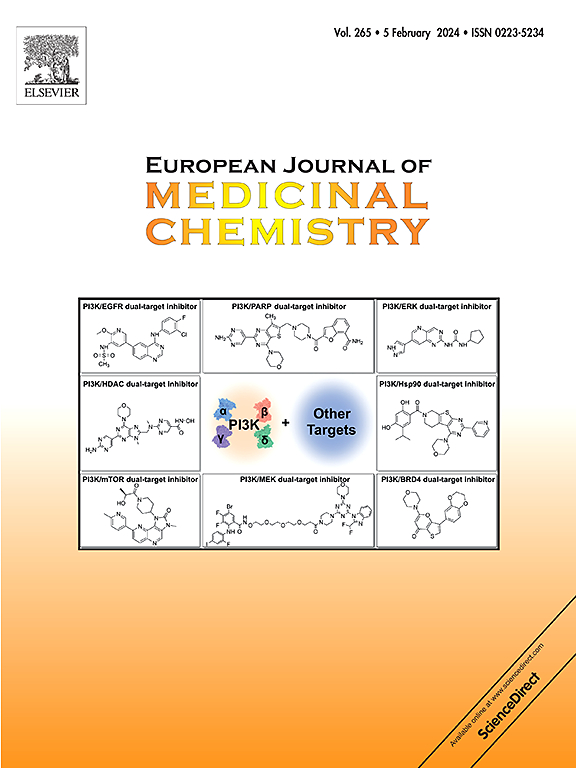1,5-Disubstituted 1,2,3-triazoles: Molecular scaffolds for medicinal chemistry and biomolecular mimetics
IF 6
2区 医学
Q1 CHEMISTRY, MEDICINAL
引用次数: 0
Abstract
Ruthenium (II) catalyzed click chemistry enable the highly efficient and selective synthesis of 1,5-disubstituted 1,2,3-triazoles. This method provides exclusive formation of the desired 1,5-regioisomer. In the past twenty years, these reactions have become a valuable tool in organic synthesis. Similar to 1,4-regioisomer of 1,2,3-triazole, 1,5-disubstituted 1,2,3-triazole functions as biocompatible linkers and biologically active scaffolds. This review focuses on the synthesis and medicinal chemistry significance of these triazoles as versatile building blocks. Notably, they serve as bioisosteres of the cis-amide bond, conferring enhanced stability and mimicking constrained amino acids, making them crucial for peptidomimetic development. Hence, we are discussing their application in the development of peptidomimetics. 1,5-Disbstituted 1,2,3- triazoles mimic cis-amide bond in the peptides, altering their conformation and biological activity. Furthermore, we have discussed its application to create novel bioactive molecules, including mimics of natural products, nucleosides, nucleotides, glycoconjugates, and protein-protein interaction inhibitors. This review highlights their substantial potential in drug discovery, and provides a valuable resource for future research in this field.


1,5-二取代1,2,3-三唑:药物化学和生物分子模拟物的分子支架
钌(II)催化的化学反应使得1,5-二取代1,2,3-三唑的合成具有高效率和选择性。这种方法提供了所需的1,5-区域异构体的排他性形成。在过去的二十年中,这些反应已成为有机合成的宝贵工具。与1,2,3-三唑的1,4-区域异构体类似,1,5-二取代1,2,3-三唑具有生物相容性连接剂和生物活性支架的功能。本文综述了三唑类化合物的合成及其在药物化学中的意义。值得注意的是,它们作为顺酰胺键的生物同工异构体,具有增强的稳定性和模拟受限氨基酸,使它们对拟肽发育至关重要。因此,我们讨论了它们在拟肽制剂开发中的应用。1,5-二取代1,2,3-三唑模拟肽的顺酰胺键,改变肽的构象和生物活性。此外,我们还讨论了其在创造新型生物活性分子方面的应用,包括天然产物、核苷、核苷酸、糖缀合物和蛋白质-蛋白质相互作用抑制剂的模拟物。本文综述了它们在药物发现方面的巨大潜力,并为该领域的未来研究提供了宝贵的资源。
本文章由计算机程序翻译,如有差异,请以英文原文为准。
求助全文
约1分钟内获得全文
求助全文
来源期刊
CiteScore
11.70
自引率
9.00%
发文量
863
审稿时长
29 days
期刊介绍:
The European Journal of Medicinal Chemistry is a global journal that publishes studies on all aspects of medicinal chemistry. It provides a medium for publication of original papers and also welcomes critical review papers.
A typical paper would report on the organic synthesis, characterization and pharmacological evaluation of compounds. Other topics of interest are drug design, QSAR, molecular modeling, drug-receptor interactions, molecular aspects of drug metabolism, prodrug synthesis and drug targeting. The journal expects manuscripts to present the rational for a study, provide insight into the design of compounds or understanding of mechanism, or clarify the targets.

 求助内容:
求助内容: 应助结果提醒方式:
应助结果提醒方式:


